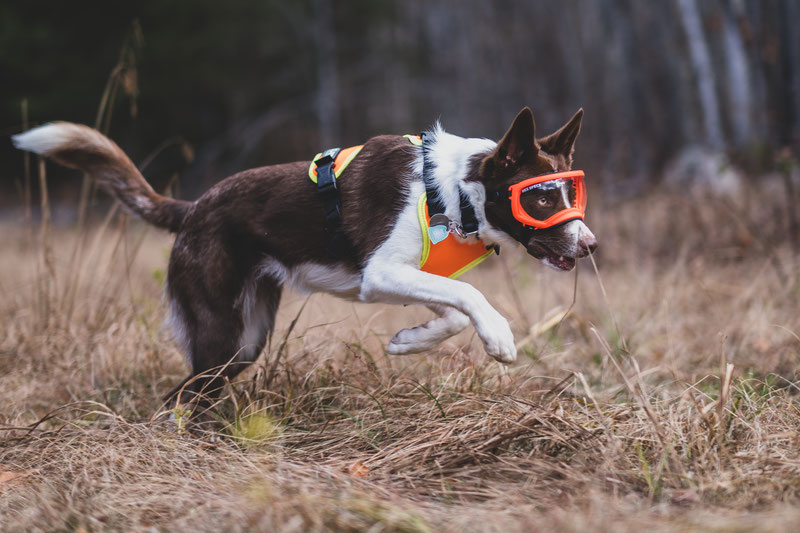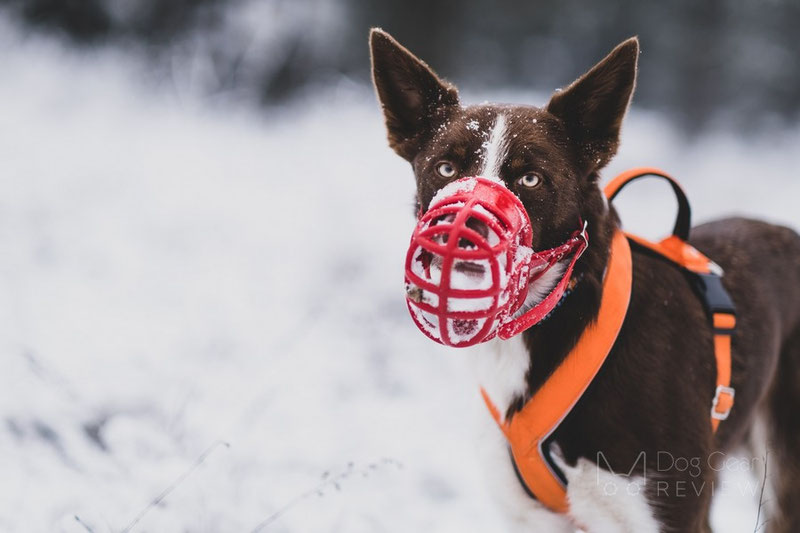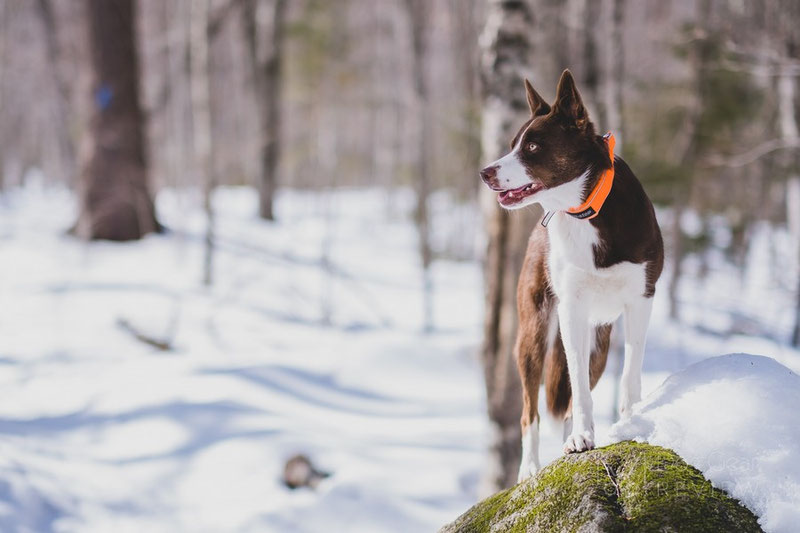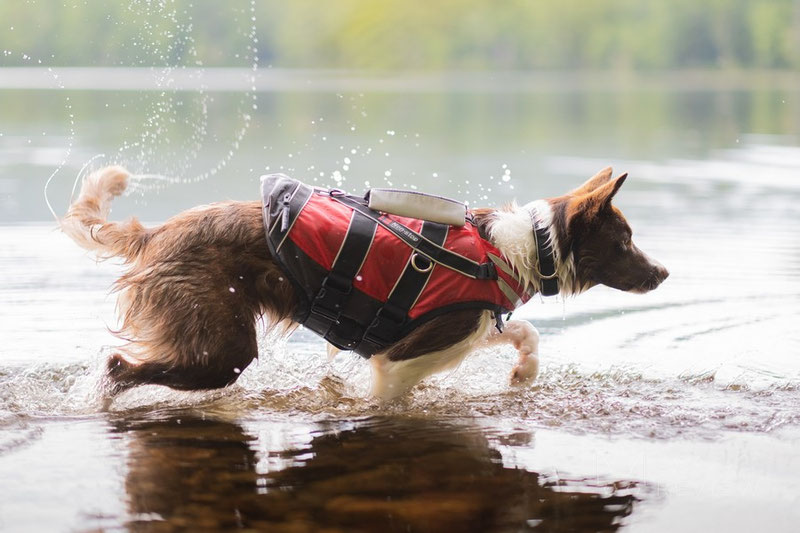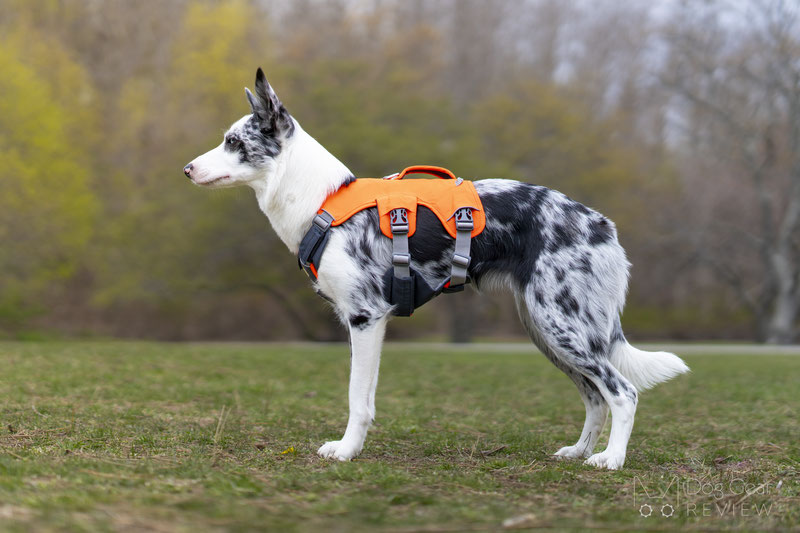Did you know that most dogs end up with some eye problems by the time they are eight years old? And did you know many of these could be prevented by using goggles?
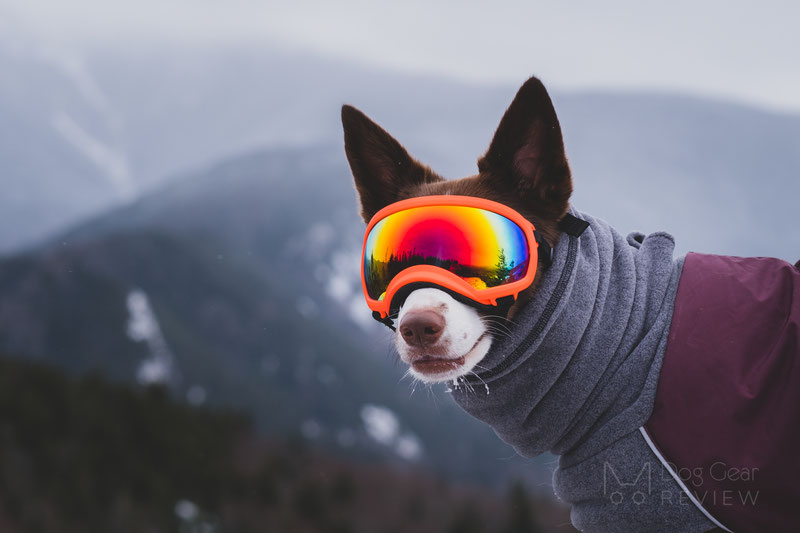
Our story
Let me start by telling you a story from three years ago.
We went to an off-leash park/forest with puppy Mia. I wouldn’t even call it a hike; it was just a 2-hour stroll through the woods on wide trails. An hour into our relaxing walk, Mia was proudly running around me with a stick and ran into a bush… She has this great habit of not looking where she is going when she is in play mode.
Right there, I noticed that something was off with her, but I didn’t find any injuries, and she acted normal after a few minutes, so we went home. The following day she kept one eye closed, and even when she opened it, the left pupil was tiny and not responding to light/darkness. 😶
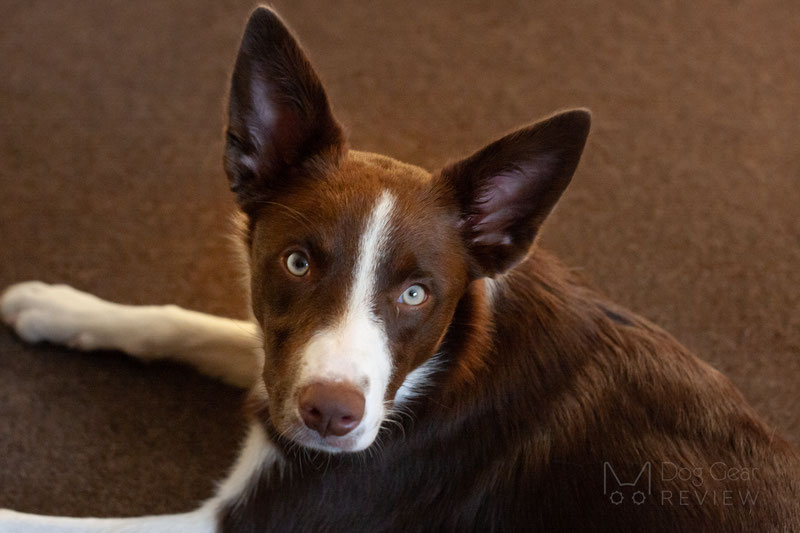
We ran into the closest vet, where they checked her eye and discovered a small scratch on it. We were lucky; after a few days of eye drops, pain killers, and a ~$200 vet bill, she was back to normal.
On the one hand, we try not to be overly protective about our dogs, but on the other hand, their eyes are so sensitive, and they can lose their sight so quickly. This wasn’t even a big accident; it wasn’t dark; it wasn’t a rough hike; something like this could happen any day.
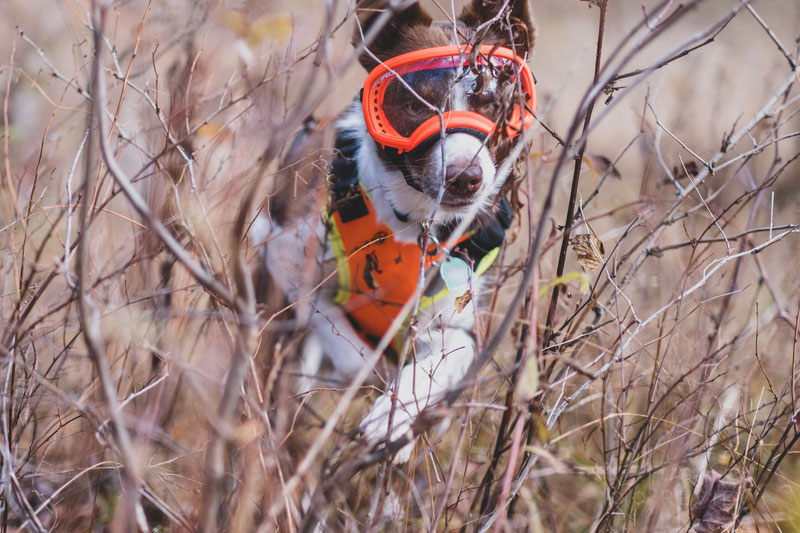
Different reasons for putting goggles on dogs
- To protect the dogs’ eyes from punctures or trauma when running through a dense forest, like in the case of a hunting dog or a Search and Rescue dog. We also have to consider that while the goggles will protect the eyes, the dog will have an easier time getting stuck on something when pushing through dense undergrowth.
To help prevent Chronic Superficial Keratitis (Pannus), a common eye condition worsened by exposure to UV rays. This is most common in German Shepherds but can affect other dogs who spend a lot of time outside where UV rays are intense. (Side note: even the clear Rex Specs lenses protect from UV! )
To help dogs who struggle on sunny days due to their light-colored eyes. This is usually more of an issue when hiking above the treeline or just being on a boat where the light reflects from the water. Mia has a tough time with these conditions, and she barely keeps her eyes open to filter out the light. However, when using a tinted lens, she can keep her eyes open, which is probably more comfortable for her and is helpful on steep hikes.
If you bike with your dog or let them stick their head out the car window, there is always a chance that small rocks or even just bugs will hit their eyes, causing damage.
To protect the eye(s) after surgery.
To protect the eyes of a blind dog who doesn’t see what they walk into
Dogs with white-face (especially short-haired ones) tend to have sensitive skin around their eyes, prone to sunburn. This is something that no one would worry about until you get a dog who has trouble with it :)
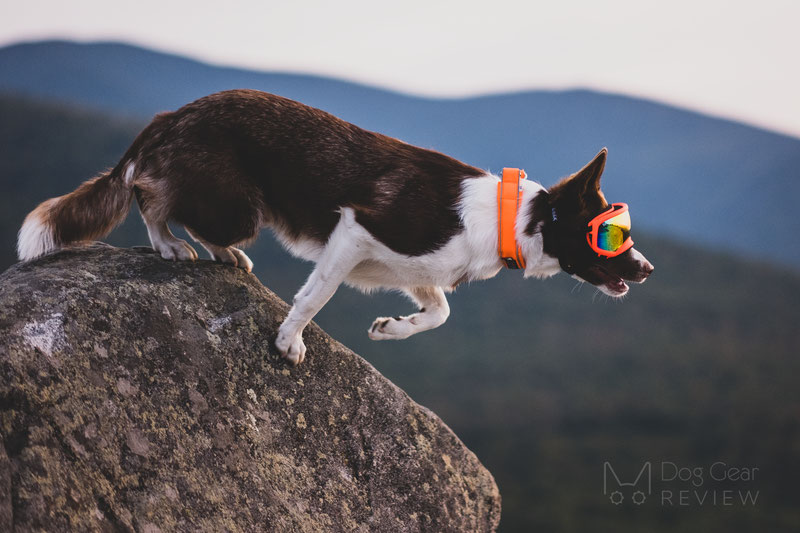
Eye protection during winter
Most people only think about summer when we talk about tinted lenses. The thing is that while the UV index is the lowest during the winter, the snow reflects up to 80 percent of the sun’s UV light. It depends on many other factors, but UV rays can be just as damaging during the winter as on the beach on a nice summer day.
It is recommended for humans to use sunscreen and sunglasses all year round if we are spending time outdoors, and that’s also recommended for dogs. This is especially important if you spend time at high altitudes where the UV rays are even stronger!

Sizing, adjustment, and training
It’s important to note that your dog will probably not like wearing the goggles first - just like most dogs don’t have to get used to wearing a collar or boots. You have to practice and train to be sure they don’t mind wearing it at all. We had an easier time with Mia because she was already muzzle trained and wasn’t bothered by another gear on her face.
The goggles in this post are from Rex Specs, and they have excellent charts and videos about sizing and adjustment on their website. It’s important that your dog will only be comfortable with the goggles if they are the correct size. You want to be sure that the elastic piece isn’t too tight around their muzzle so they can drink and pant while wearing it.

Summary
On the one hand, putting goggles on a dog seems like “helicopter parenting”, which is an understandable assumption. Wolfs and farm dogs live happily without any of these fancy gear. The difference is that you don’t see a wolf on a SUP/boat on a sunny day, and farm dogs can usually also decide when they want to chill in the shade. Wolfs and most dogs are also more likely to have brown eyes over blue, making it much easier to handle bright light.
These days we expect very different things from dogs and involve them in more and more activities, “forcing” them to act differently than they would in nature. Therefore, giving them additional protection for these activities makes sense. It’s also true that not every dog needs goggles, and one is not being irresponsible just because they don’t think it’s necessary for their dogs. You can check out our other article where we discussed if all these dog products are actually necessary.
Ps. You can also check out our Rex Specs Goggles review, if you want to learn more! ;)
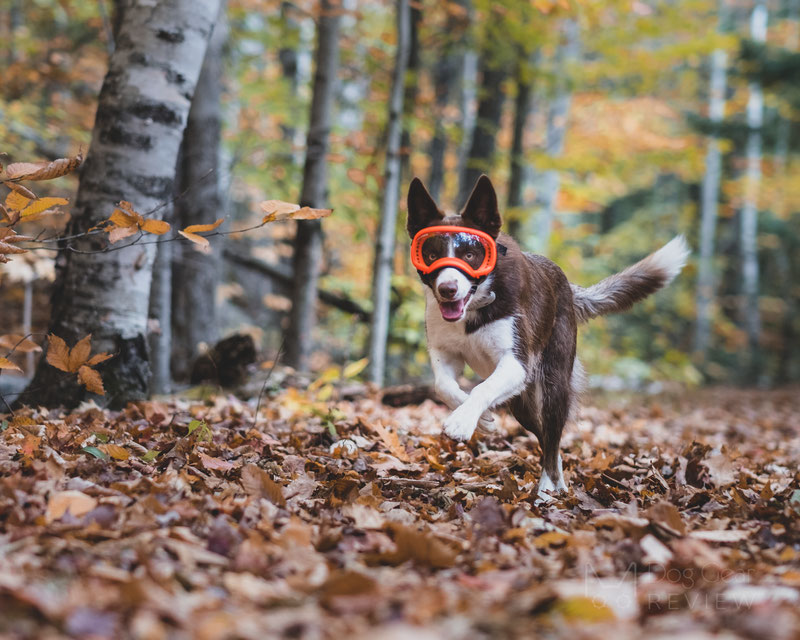
Where to buy
You can buy all their products on their website, some combinations are available on Amazon, and you can also find them at many different retailers in many countries.
Disclaimer: this article contains an Amazon affiliate link, which supports Dog Gear Review if you purchase the product after clicking on it without costing you anything extra. Using affiliate links will never compromise us writing unbiased, honest reviews!
